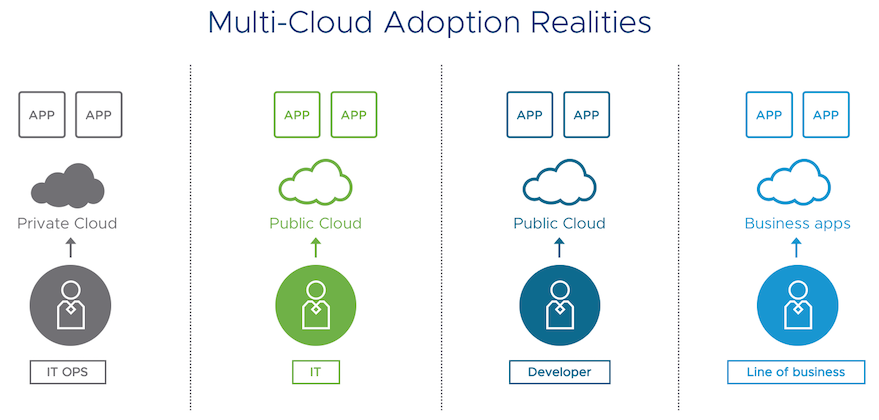PacketFabric Extends its Software-Defined Network Across the Pond
 PacketFabric’s network could potentially provide underlying network transport for an SD-WAN vendor such as Aryaka.
PacketFabric’s network could potentially provide underlying network transport for an SD-WAN vendor such as Aryaka.
Announcing General Availability of VMware NSX-T Data Center 2.2.0
VMware is pleased to announce that VMware NSX-T Data Center 2.2.0 has been released on June 5, 2018!
With this release we have introduced a number of excellent new features for on-premise deployments as well as the ability to manage Microsoft Azure based workloads as part of the NSX Cloud product. VMware NSX-T Data Center has also been updated to provide networking and security infrastructure for VMware Cloud on AWS.
Here is list of highlighted features that may be of most interested to customers. Note that this is not a complete list of new features. Please see the release notes for this release for all of the details.
Management of Workloads in Microsoft Azure
One of the most interesting new features of NSX-T Data Center 2.2 is the enablement of NSX Cloud, managing networking and security for applications running natively in public clouds, now including Microsoft Azure. This feature enables a true hybrid cloud with management of network security in a single view. This feature is detailed well in the following blog by Jonathan Morin so instead of repeating all the details here it is highly recommended you review this page: https://blogs.vmware.com/networkvirtualization/2018/06/nsx-cloud-a-new-and-improved-model-for-end-to-end-networking-and-security.html/
Enhanced Data Path Mode in N-VDS
BiB 043: DriveScale’s Software Composable Infrastructure For Flash
In this briefing, DriveScale announced Software Composable Infrastructure for Flash, which they claim is a market first. Flash storage is all about high bandwidth and low latency, and the latest NVMe flash drives have ferocious network-filling capability. If you think serving storage over Ethernet is a performance compromise, think again.
The post BiB 043: DriveScale’s Software Composable Infrastructure For Flash appeared first on Packet Pushers.
G7 Leaders, the World is looking at you to make the right decisions
As Canadian Prime Minister Justin Trudeau gets ready to host the G7 Summit this week, renewed tensions around trade remind us how vulnerable the global economy is, and how working together is more important than ever to solve these complex issues.
And today, the world is looking to G7 leaders to make the right decisions.
The connected future is here. While the Internet has yet to reach its full potential (half of the world’s population remains offline), there’s little doubt that it’s already changing the landscape of trade, jobs, and the digital economy. According to data from McKinsey, the Internet accounts on average for 3.4 % GDP across the large economies that make up 70 % of global GDP. The global network offers a unique space where data, goods and services can flow and fuel the next wave of global growth, where anyone can take part and benefit from new economic opportunities.
One of the values of this connected world is our ability to interconnect — the way we live our lives, the way we socialize, and we interact with the world. Everything from clothes to toys and toothbrushes are coming online as well. The International Data Continue reading
Microsoft’s GitHub Mega-Deal Draws Scenarios, Barbs
 Past acquisitions by Microsoft have fueled heated responses on social media to the latest multibillion-dollar deal.
Past acquisitions by Microsoft have fueled heated responses on social media to the latest multibillion-dollar deal.
Dell’Oro: Ericsson Beats Huawei, Cisco as No. 1 NFV EPC Vendor
 A recent Dell’Oro report found that the prevalence of 5G has triggered strong growth within the NFV market, specifically with cloud native VNFs.
A recent Dell’Oro report found that the prevalence of 5G has triggered strong growth within the NFV market, specifically with cloud native VNFs.
Arista’s New Switch Features Barefoot’s Programmable Tofino Chip
 The switches are not only programmable, they're re-programmable, making them available for future use cases, using the same device.
The switches are not only programmable, they're re-programmable, making them available for future use cases, using the same device.
Reaction: The Power of Open APIs
Disaggregation, in the form of splitting network hardware from network software, is often touted as a way to save money (as if network engineering were primarily about saving money, rather than adding value—but this is a different soap box). The primary connections between disaggregation and saving money are the ability to deploy white boxes, and the ability to centralize the control plane to simplify the network (think software defined networks here—again, whether or not both of these are true as advertised is a different discussion).
But drivers that focus on cost miss more than half the picture. A better way to drive the value of disaggregation, and the larger value of networks within the larger network technology sphere, is through increased value. What drives value in network engineering? It’s often simplest to return to Tannenbaum’s example of the station wagon full of VHS backup tapes. To bring the example into more modern terms, it is difficult to beat the bandwidth of an overnight box full of USB thumb drives in terms of pure bandwidth.
In this view, networks can primarily be seen as a sop to human impatience. They are a way to get things done more quickly. In the Continue reading
OutSystems Raises $360M to Expand Low-Code Development Platform
 The company partnered with Microsoft, AWS, Pivotal, and Docker to determine how to take its low-code philosophy to containers.
The company partnered with Microsoft, AWS, Pivotal, and Docker to determine how to take its low-code philosophy to containers.
NSX Cloud: A New and Improved Model for Multi-cloud Networking and Security
Remember the headlines years ago, asking what would win: public cloud or private cloud? Or hybrid cloud? And everyone had different definitions for each? Of course, as it often is with technology trends, our “or” questions have “and” answers. Let’s imagine current day, where you might see one group running an application on-premises with absolutely zero plans for it to go anywhere. In a far-away land, several desks or cubes away, some savvy developers are building a new innovation – it could be a new service type, a new app, a new feature on a website – directly in AWS. A few desks further, and someone indeed may believe that AWS app belongs back on premises. Finally, in the same organization, an IT group is looking at how Microsoft Azure is offering a compelling alternative to hosting an app they’re just not interested in maintaining anymore.
This is just one example of a potential multi-cloud scenario. Each organization’s specific needs are different, yet this array of parallel cloud uses is not a foreign one to many organizations. In fact, in this year’s “State of the Cloud” report, RightScale found that organizations use five clouds on average.

White Paper: Secure and Cost-Effective Digital Transformation
 A new white paper from Zscaler introduces a powerful solution for providing an efficient and secure experience between users and cloud/SaaS.
A new white paper from Zscaler introduces a powerful solution for providing an efficient and secure experience between users and cloud/SaaS.
Related Stories
Introducing DNS Resolver for Tor


In case you haven’t heard yet, Cloudflare launched a privacy-first DNS resolver service on April 1st. It was no joke! The service, which was our first consumer-focused service, supports emerging DNS standards such as DNS over HTTPS:443 and TLS:853 in addition to traditional protocols over UDP:53 and TCP:53, all in one easy to remember address: 1.1.1.1.
As it was mentioned in the original blog post, our policy is to never, ever write client IP addresses to disk and wipe all logs within 24 hours. Still, the exceptionally privacy-conscious folks might not want to reveal their IP address to the resolver at all, and we respect that. This is why we are launching a Tor hidden service for our resolver at dns4torpnlfs2ifuz2s2yf3fc7rdmsbhm6rw75euj35pac6ap25zgqad.onion and accessible via tor.cloudflare-dns.com.

NOTE: the hidden resolver is still an experimental service and should not be used in production or for other critical uses until it is more tested.
Crash Course on Tor
What is Tor?
Imagine an alternative Internet where, in order to connect to www.cloudflare.com, instead of delegating the task of finding a path to our servers to your internet provider, you had to go through the following Continue reading
The Internet of Food is on the table
The food sector is one of the few large remaining sectors that have not been radically transformed by new technologies yet. Up to now, the Internet in particular was not involved as much as other sectors. However, in a not-too-distant future, the everyday question “what’s for dinner?” will be answered by algorithms managed by the next generation of food companies. When these algorithms are governing the food industry, they will also be governing people as well as their health and well-being.
As food is online, we will start realizing how important network design has become for our existence. The question “what’s for dinner?” will be replaced by “who decides what we eat?”. The Internet Society members, Johan Jörgensen, Michael Daun and Patrik Fältström, assure that this is the most profound question that the tech revolution has asked so far. That is the reason why they created a Special Interest Group on Internet of Food to focus on general discussions around the future infrastructure and standards for the digital world of food.
 The project leader Johan Jörgensen explains: “The initial work in the SIG has been about discussing which standards already exist in the food Continue reading
The project leader Johan Jörgensen explains: “The initial work in the SIG has been about discussing which standards already exist in the food Continue reading

